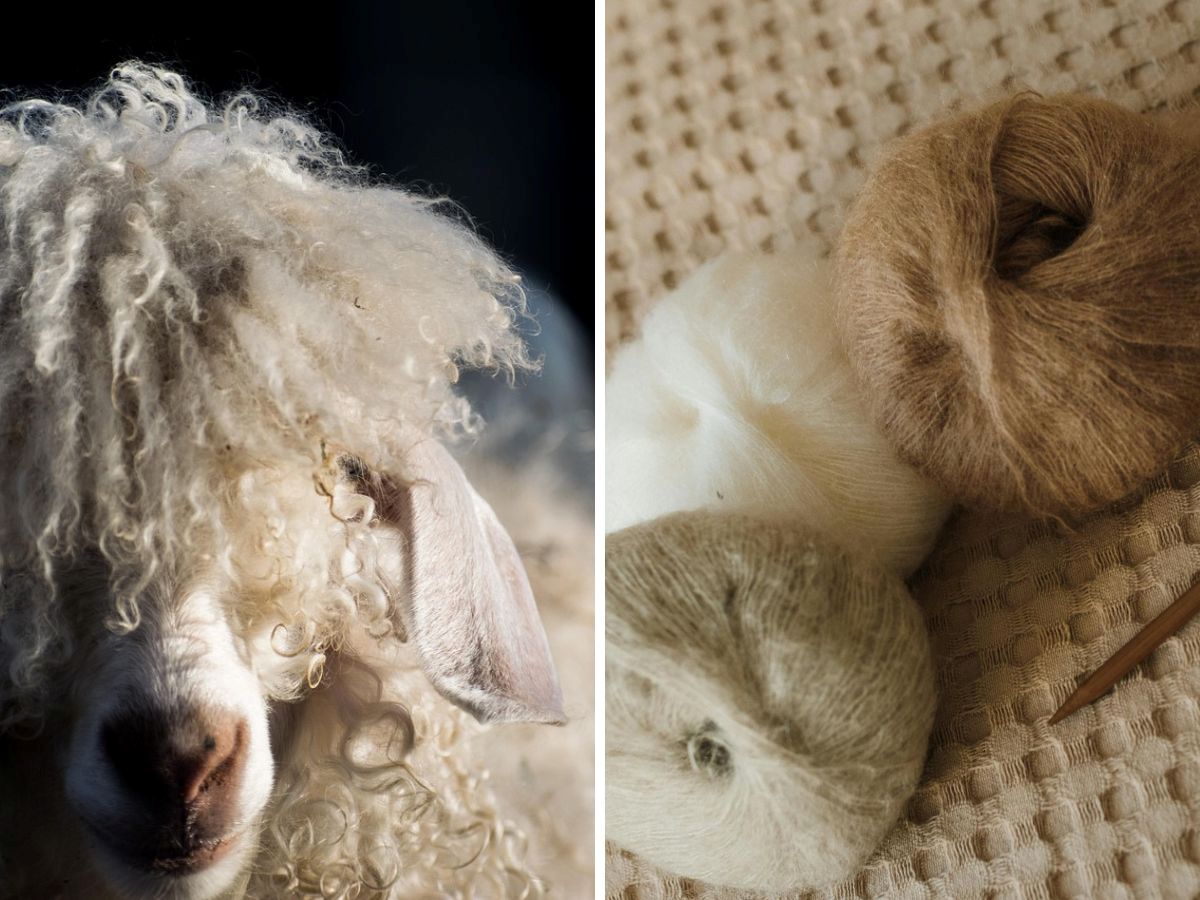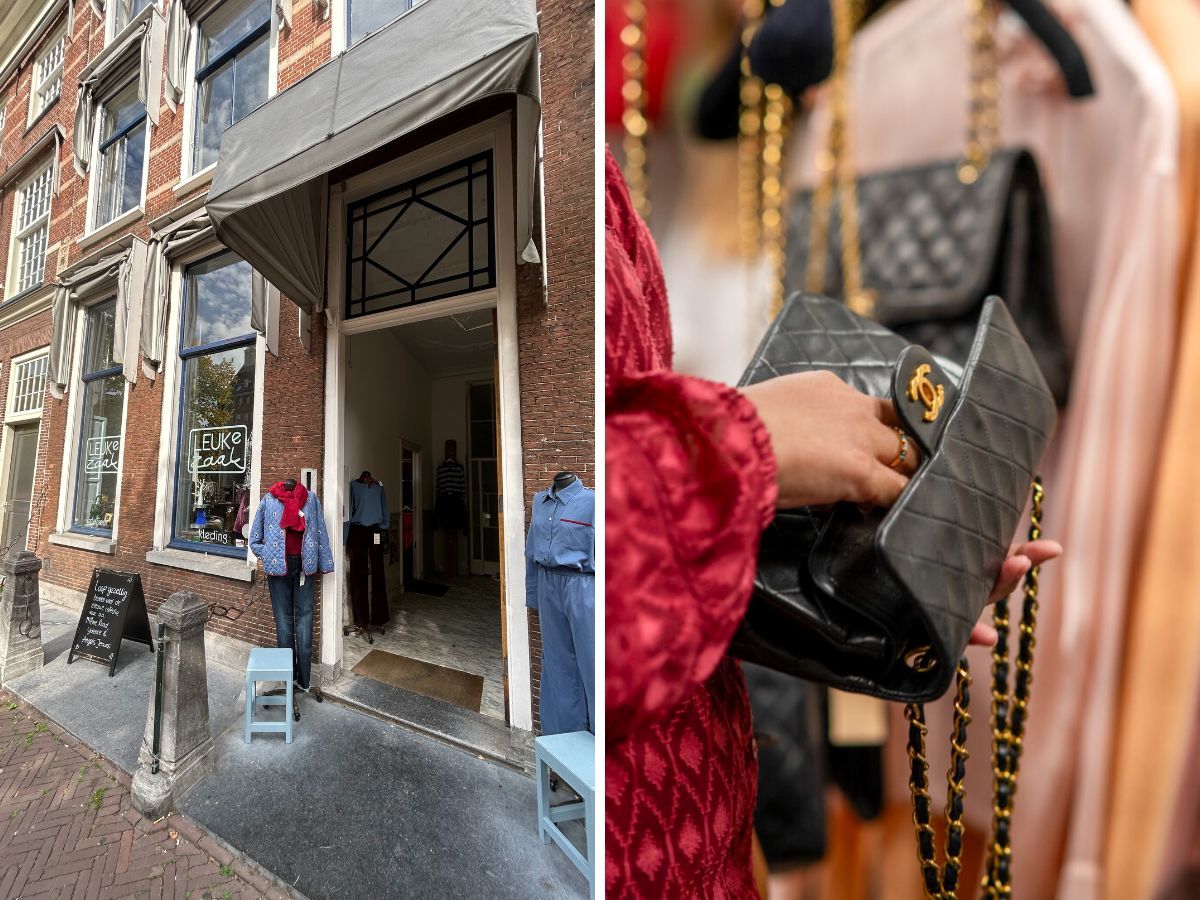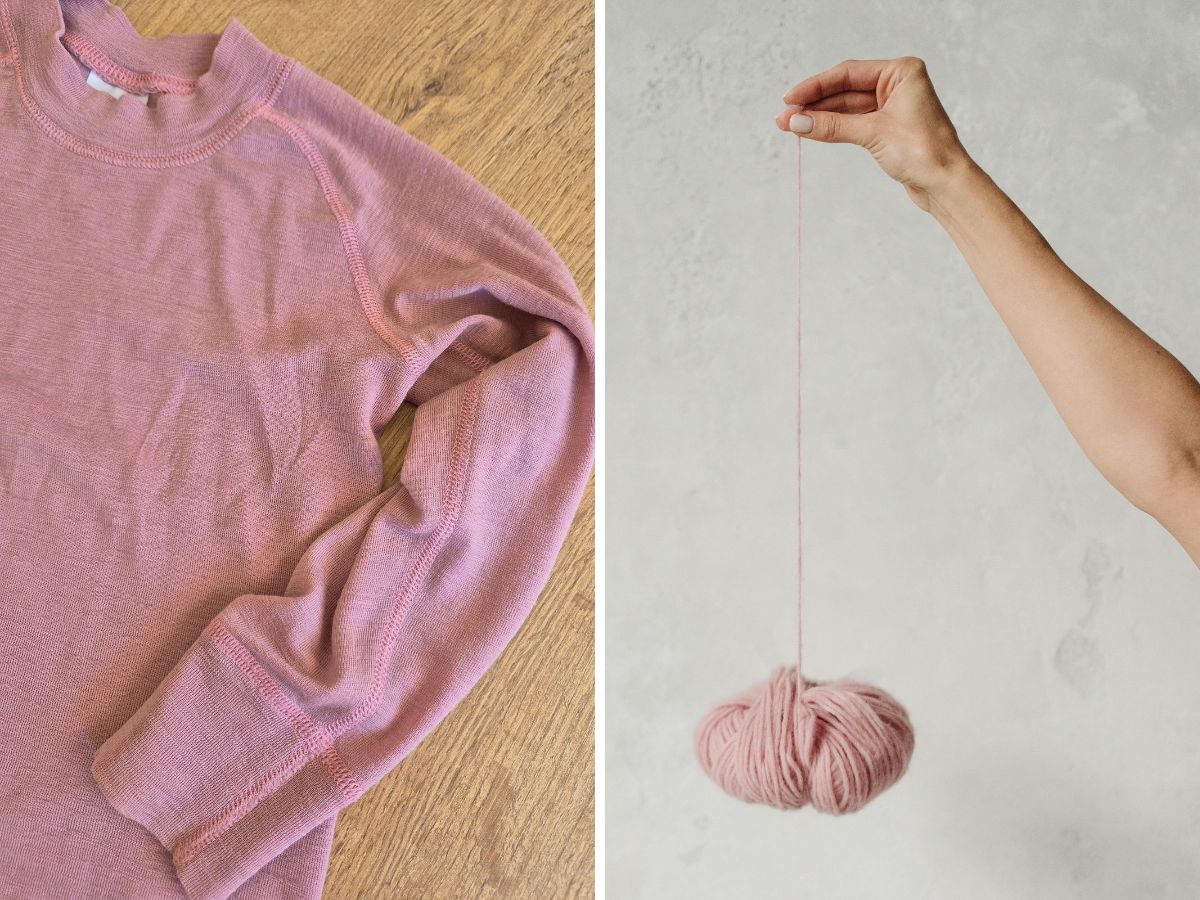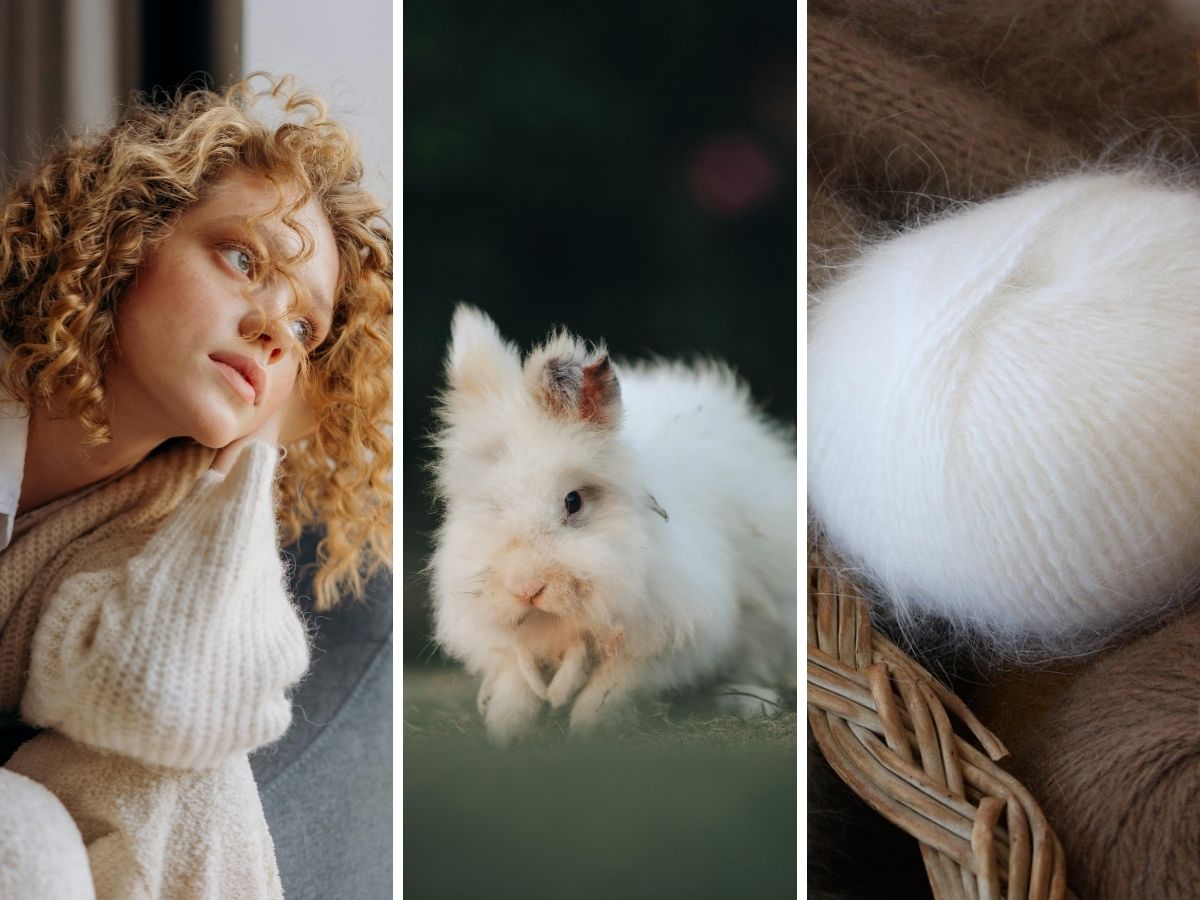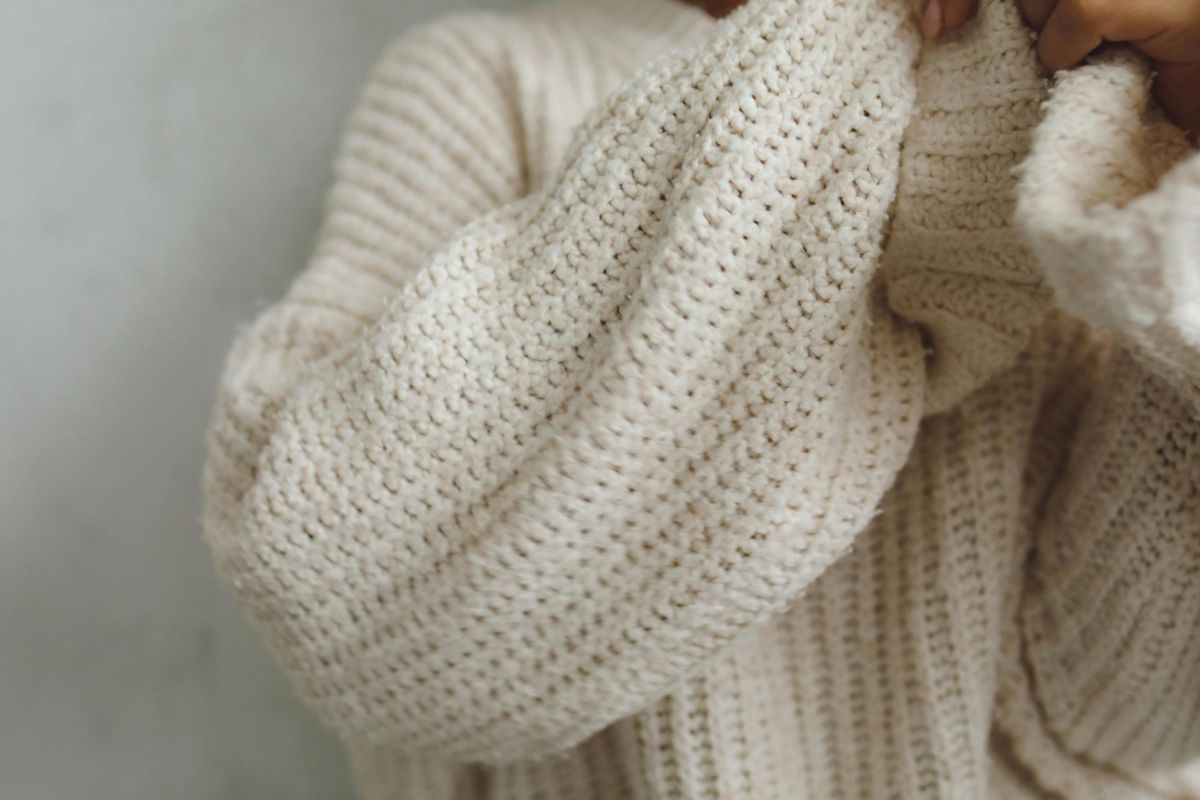The wool of angora goats is called mohair. Originally, this wool comes from Turkey, just like angora wool from rabbits. To avoid confusion, the wool of angora goats was given the name mohair, derived from the Arabic mukhayyar, which means ‘selected’. Not only does this sound chic, but the fibre is really soft and shiny with a luxurious feel. So mohair is a fine, natural material, but how sustainable is it really? And what about animal suffering in the mohair industry? Thegreenlist.nl went to investigate.
What exactly is mohair?
Mohair comes from angora goats - not to be confused with angora wool, which comes from angora rabbits. In this article, we already told you about angora wool and the animal suffering that usually accompanies it. Unlike the poor angora rabbits, angora goats are fortunately not handpicked, but shorn twice a year. Yet this material is also associated with animal suffering, we will come back to that in a moment. First, let's talk about mohair's fine qualities: this wool is wonderfully soft, shiny and dirt-resistant. Once you put it on, you won't want to take it off. And yet mohair also has its frayed edges.
How durable is mohair?
Mohair often comes from far away. Just over half of all mohair comes from South Africa. Other countries where this wool comes from include Lesotho, Argentina, Turkey, the US, Australia and New Zealand. And that is not the only drawback. Like sheep, angora goats emit methane through their farts: a powerful greenhouse gas that contributes to global warming. The animals also need a lot of land for grazing. Actually, therefore, we can say that the problems involved with sheep's wool are also true for angora goats. Fortunately, there are also pluses. Mohair is a natural material and, unlike synthetic fabrics, is not made from petroleum. It is biodegradable and does not cause microplastics. Its special fibre structure means you need to wash it less often and at only 30 degrees, which saves water and energy. Moreover, a well-made mohair garment will last for years.
Are angora goats mistreated?
Mohair may not be the most durable material, but as we mentioned earlier in this article on clothing materials we already wrote: every material has its disadvantages for the planet. With animal materials, animal suffering can be an additional problem. If we talk about angora wool from rabbits, it rings a bell with many people that this is problematic, but with mohair it is less known, while wool from angora goats is used much more often.
Yet mohair also made negative headlines. Animal rights organisation PETA released a video showing angora goats being treated horribly. Should you want to see these shocking images for yourself, you can do so here. A number of well-known brands announced they will no longer use mohair in their range, but there are still plenty of (online) shops that do sell mohair items.


Fortunately, there is also more sustainable wool from angora goats, for example from lovely Dutch brand The Knitwit Stable. Their goats are simply grazing in the Netherlands!
Is there any durable wool from angora goats?
So if you want to buy a garment, accessory or anything else made of mohair, it is important to make sure that the wool was produced as sustainably as possible and did not involve animal suffering. Buying second-hand is a good option to ensure that no new wool was needed. Recycled mohair would also be a good idea, only this is hard to find, probably because most items do not contain 100% mohair and are therefore difficult to recycle. If you want to buy a new item made of mohair, you can pay attention to the RMS (Responsible Mohair Standard) label, which - like RWS (Responsible Wool Standard) - is a hallmark of Textile Exchange. More sustainable brands selling clothes made from RMS-certified mohair are Armed Angels, Sézane and Basic Apparel. You can also find RMS-certified mohair at H&M these days.
Completely sustainable and transparent is the Dutch brand The Knitwit Stable, which sells clothes and yarns made of Dutch mohair. In the village of Baambrugge, between Utrecht and Amsterdam, their own angora goats (and sheep) graze. In their own factory and from their wool, beautiful woollen clothes and accessories are made. You can also find mohair yarn here, if you want to get started with knitting needles yourself.
Don't be fooled by cheap mohair
Mohair is a beautiful natural material with fine properties. But as with all animal fibres, it is important to make sure that no animal suffering has been involved. Things certainly still go wrong in the mohair industry, so handle this beautiful material consciously. Preferably buy second-hand and otherwise at least certified mohair. Fair and sustainable mohair comes with a price tag: a mohair jumper for 40 euros simply cannot be right. Producers often use all sorts of tricks to make savings: they mix mohair with cheaper (usually synthetic) material, use thinner wool, or cut back on animal or worker welfare. So be aware of the value of mohair and treat garments accordingly, and mohair could well be part of a sustainable wardrobe.
More sustainable tips from thegreenlist.nl
- Closer to home: Check out these Dutch wool clothing brands.
- Prefer knitting yourself? Here you will find knitting yarn made of Dutch wool.
- Wool from goats: how sustainable is cashmere?
Sources: Aramco, Textile Exchange, The Washington Post, PETA, OneWorld, It canWEL, RTL, Impactful Ninja. Photo credits: main image: angora goat: Moniquepotg (Pixabay), Bulb of wool: Arina Krasnikova (Pexels), other: angora goats: Jan Bader (Pexels), Woman at mill: The Knitwit Stable.

